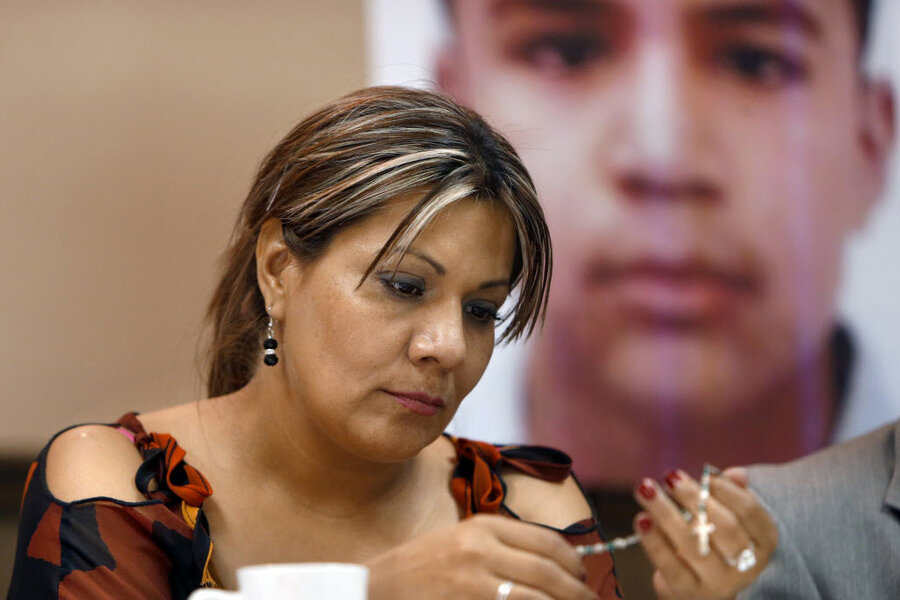Cross-border shooting: US Border Patrol agent charged in murder of Mexican teen
Loading...
A US Border Patrol agent who shot and killed a Mexican teenager in a cross-border shooting incident has been charged with second-degree murder.
According to the Border Patrol, 16-year-old Jose Antonio Elena Roderiguez was among a group of rock-throwers in the Mexican city of Nogales on Oct. 10, 2012, when Agent Lonnie Swartz shot from the Arizona side of the border.
Jose’s family, however, maintains that the boy, unarmed, was walking home from a basketball game with friends and did not throw the rocks.
Luis Parra, the attorney for the mother of Jose Antonio Elena Rodriguez, told The Associated Press that a federal grand jury indicted Mr. Swartz on Wednesday.
"The Elena Rodriguez Family is grateful to the [Department of Justice] for this first step in the pursuit of justice, and remain steadfast in their resolve to seek full transparency from the U.S. Border Patrol on behalf of Jose Antonio," Mr. Parra said.
Swartz's attorney, Sean Chapman, told The Arizona Daily Star his client will plead not guilty at an Oct. 9 arraignment.
An autopsy revealed Elena Rodriguez had been shot about 10 times.
As The Christian Science Monitor reported at the time:
Under Border Patrol policy, bullets can be a justified response to rocks, because rocks have caused serious injuries to agents in the past. But both American civil liberties groups and Mexican authorities are drawing attention to the incident, saying it raises worrying questions not only about the Border Patrol's use of force, but also its recent surge of manpower along the border.
The FBI is investigating, as are Mexican officials. At the behest of concerned members of Congress, the Office of Inspector General is already reviewing border agencies' use-of-force guidelines in connection with a different incident.
Swartz is also facing a federal civil rights lawsuit in Jose's death. The American Civil Liberties Union filed the suit on Rodriguez’s behalf and alleges that the incident demonstrates a culture of excessive force among border patrol agents.
Mr. Chapman tried to get the criminal lawsuit dismissed on the grounds that the US Constitution doesn't apply to Mexican citizens, as Jose was in Mexico at the time of the shooting, but a federal judge ruled in July 2014 that the lawsuit can proceed.
In a similar case in Texas, a federal appeals court ruled that a teen killed in Mexico by a border agent in El Paso does not have protection under the Constitution.
In June 2010, US Border Patrol Agent Jesus Mesa Jr., shot 15-year-old Sergio Adrian Hernandez Guereca near a bridge between El Paso, Texas, and Ciudad Juarez, Chihuahua. Before he fired his weapon across the Rio Grande, Mesa was trying to arrest immigrants who had illegally crossed into the country when rock-throwers attacked him, authorities said.
A three-judge circuit court of appeals panel originally said Hernandez Guereca's family had grounds to sue Mesa, but the full court overturned that ruling in April.
According to the Department of Homeland Security agency, rock throwers have attacked agents more than 1,700 times since 2010. The Monitor reported that US border patrol agents have fired across the border at least 12 times in the past five years, killing six Mexicans standing on Mexican soil, according to a 2013 joint investigation by Washington Monthly and The Investigative Fund at The Nation Institute, a nonprofit media center.
This report contains material from the Associated Press.








